I've been agonizing for quite a while about how to mount the throttle quadrant that Mary gave me for our anniversary last year. Specifically, I was concerned about the degree to which the throttle quadrant was going to impact the amount of available legroom – I'm somewhat tall and I want to be comfortable sitting in this airplane on long trips. Another perplexing issue was the inconvenient lack of substantial structure behind the panel to which a throttle quadrant could be mounted.
Well, recently I started playing with the standard Cessna-style, plunger-type control cables, and was surprised to find that the bracket required to mount them was going to come uncomfortably close to my right knee. You see, my panel is an inch or so taller than stock, and the bracket that the plunger controls attach to has to be pretty wide because the knobs are arranged side-by-side, with a couple inches of spacing in between adjacent knobs… the combination of those two factors made the bracket intrude on my personal space. So, I started taking a hard look at just how the quadrant might be mounted. I started by mocking up the mounting location using spring clamps and scrap aluminum, then installing the pilot's seat and climbing into the fuselage for an ergonomics check. You can see in this photo that there's at least a couple of inches between the throttle quadrant and my right knee under normal circumstances:
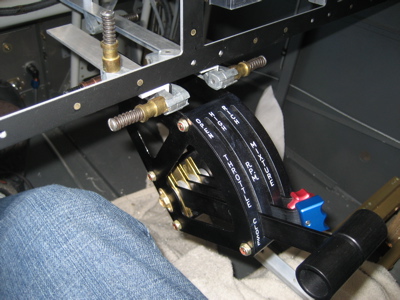
On long solo trips in calm air in my RV-9A, I always used to like slouching sort of sideways across the cabin, stretching my right leg over to the passenger side. That airplane had the short, stock panel, so it was easy to do. With the throttle quadrant here, I can't get my leg all the way across without my knee hitting it, but a decent amount of slouching-ability is still retained. I can deal.
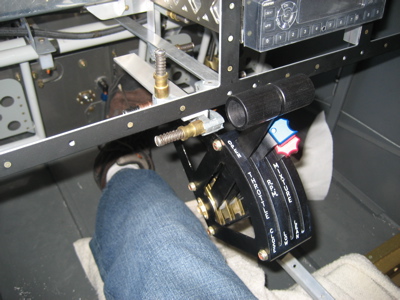
I put the transponder into its rack, just to make sure that my hand won't bump it when the throttle is fully open. With the way I have the quadrant suspended below and aft of the bottom of the panel, there's plenty of clearance. And yes, I did make airplane noises.
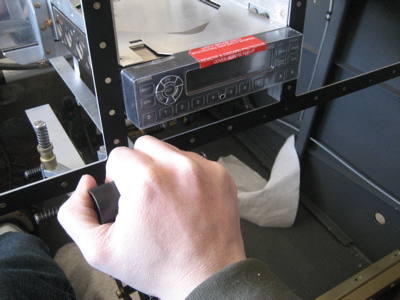
This is how the quadrant mounting setup looked about halfway through the process. I sort of made up the design as I went along, using various bits of scrap angle. With the airplane up on the gear, access to the under-panel area is somewhat inconvenient, involving a lot of crawling in and out of the fuselage with the help of a stepladder, so it was tricky to get all these pieces measured and aligned.
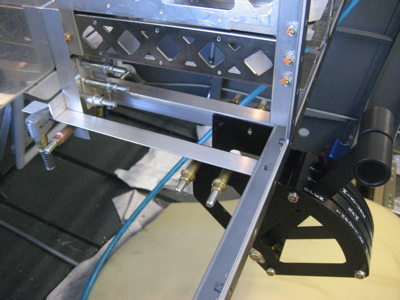
To close out the top of the throttle quadrant and make it look nicer, I freehanded this little cosmetic trim piece out of some scrap aluminum. I don't fancy myself much of a metalworking artist, but I'm pleased with how it turned out.
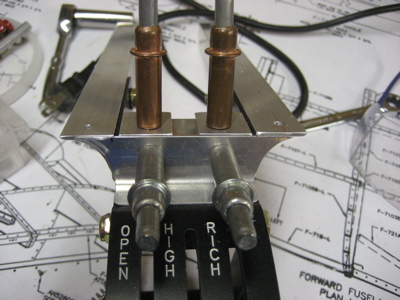
I painted the trim piece flat black to match the quadrant and panel. I also painted the exterior faces of the side mounting rails, since they'll be visible after they're mounted.
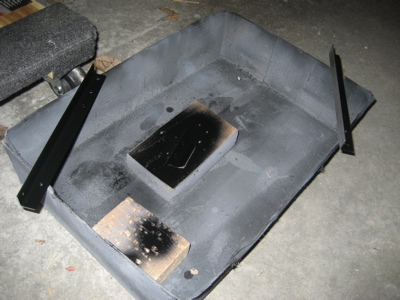
Here's the finished product, bolted in place. It's very strong – if I had any strength or agility whatsoever I could probably do handstands on it. The prop lever (i.e. the middle one) is centered laterally on the panel, so the pilot and passenger have an equal amount of legroom. Since the travel-sized Mary will be my main passenger, I thought about biasing the quadrant to the right a bit to give myself more room, but in the end I decided to take a more egalitarian approach so giants like John can ride in comfort.
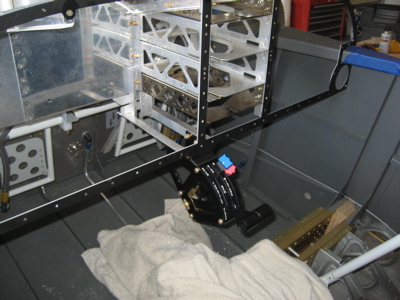
The fasteners at the aft (panel) end of the mounting structure are primarily loaded in tension, so I used #8 structural screws (AN525's) instead of rivets there.
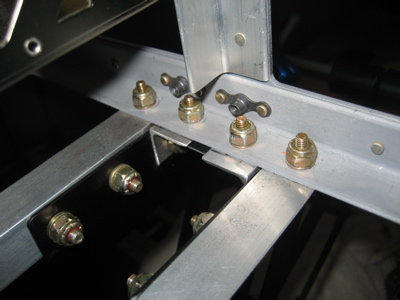
At the forward end, I drilled out one of the subpanel reinforcement brackets and replaced it with a longer one that ties into the port-side quadrant mounting rail. A couple more little pieces of angle tie into the other mounting rail and give it some additional torsional stiffness. All this aluminum angle is starting to make the under-panel area look like a jungle gym, but it's strong and light and nobody will see it.
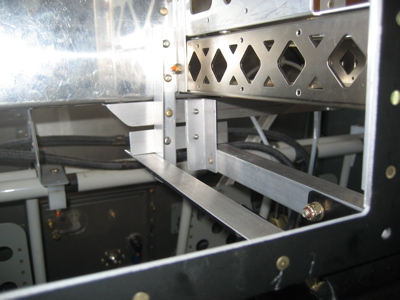
The painted trim piece looks pretty sharp:
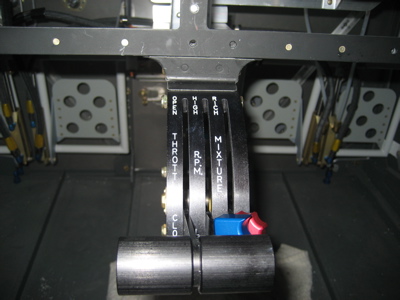
When the throttle lever is in the idle position, the sticks can get tangled up with it if you use full forward-stick and full aileron deflection. I'll be trimming the sticks to eliminate this potential safety issue – they're overly long as received, so I'd planned to shorten them anyway – but I'll wait until I have the elevators and ailerons hooked up before I do it. I have a feeling that the stick has a wider range of motion when it's not hooked to the rest of the control system, compared to how it will actually move in the finished airplane.
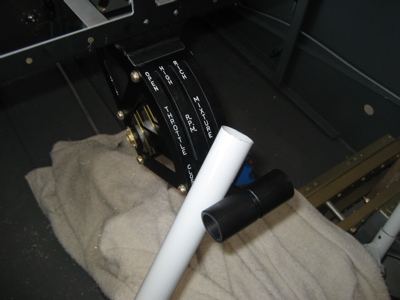
Now that I have the throttle quadrant installed – and I must say, it turned out great – I'm left with the problem of determining what length of cables I'll need to connect it to the engine. Dave Parsons was kind enough to share the cable lengths he used for his quadrant setup, so I'll use those as one data point. To avoid wasting money having custom-length cables made only to find I picked the wrong size, I decided to order from Van's a single 48" cable, which is one of their standard sizes. If that works for one of the three controls then great, I will keep it. If not, I can send it back unused for a credit, and having it on hand should get me close enough to be able to measure how long I need my custom cables to be.